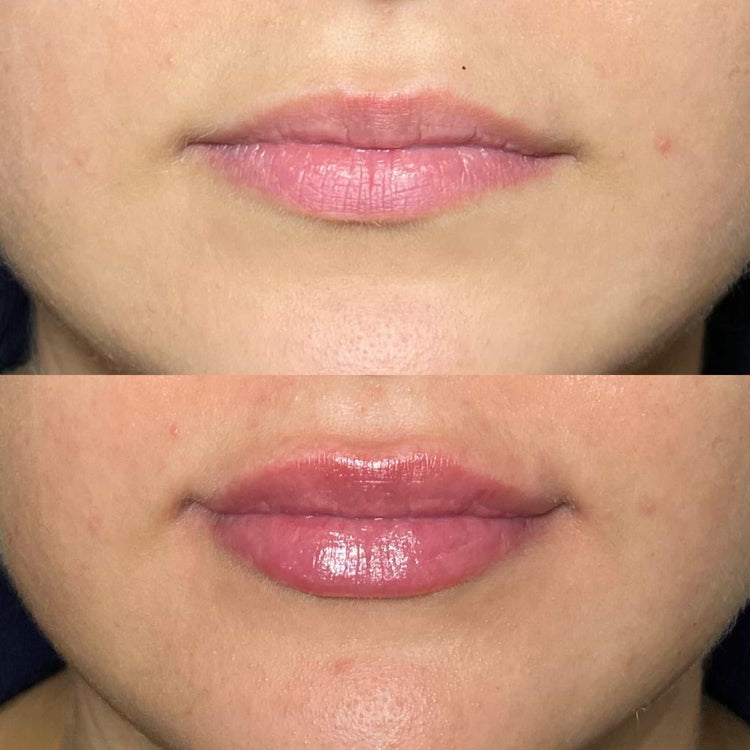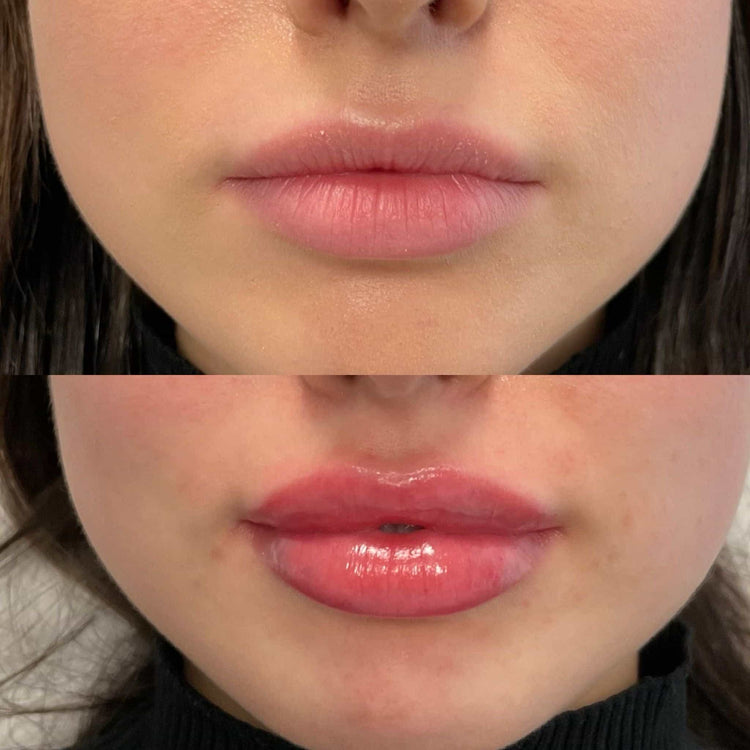Understanding The Side Effects Of Dermal Fillers
Common Side Effects
Dermal fillers are popular for enhancing facial features and reducing wrinkles, but it’s important to be aware of potential side effects. While generally safe, some individuals may experience temporary or mild reactions after treatment.

Immediate Reactions
Common side effects of dermal fillers include redness, swelling, bruising, tenderness, and itching at the injection site. These reactions are usually mild and subside within a few days to a week. In some cases, more serious side effects such as infection, allergic reactions, or vascular occlusion (blockage of a blood vessel) can occur, although they are rare.
Short-Term Effects
Short-term effects of dermal fillers typically resolve on their own within a few days to a week. Most people experience mild discomfort, redness, swelling, and bruising at the injection site. Itching and tenderness may also occur.
It’s essential to follow your practitioner’s instructions for aftercare, which may include applying ice packs, elevating the treated area, and avoiding strenuous activity.
Long-Term Effects
Long-term effects of dermal fillers are generally rare. However, some individuals may experience changes in facial contours over time as the filler is gradually absorbed by the body. This can lead to a need for repeat treatments to maintain desired results.

It’s important to note that individual responses to dermal fillers can vary depending on factors such as the type of filler used, the amount injected, and the individual’s skin condition.
Serious Complications
While dermal fillers are generally safe and effective for enhancing facial features, it is crucial to understand the potential side effects that can occur. Although most individuals experience only mild and temporary reactions, there is a risk of more serious complications, necessitating careful consideration before undergoing treatment.
Allergic Reactions
Serious complications following dermal filler injections are rare but should be understood. Allergic reactions can range from mild skin irritation to severe anaphylactic shock, requiring immediate medical attention. Signs include hives, swelling of the face or throat, difficulty breathing, and dizziness. Vascular occlusion, where a blood vessel becomes blocked, can lead to tissue damage and necrosis if not treated promptly.
It’s crucial to choose a qualified and experienced practitioner who will assess your medical history and individual needs to minimize the risk of complications. Always inform your practitioner about any allergies or pre-existing conditions before treatment.
Infections
Serious complications, though rare, can occur following dermal filler injections. Allergic reactions, ranging from mild skin irritation to severe anaphylactic shock, require immediate medical attention. Symptoms include hives, facial swelling, throat tightness, difficulty breathing, and dizziness. Vascular occlusion, the blockage of a blood vessel, can lead to tissue damage and necrosis if not treated promptly.
Infections are another potential complication, particularly if sterile techniques are not followed during the injection process. Signs of infection include redness, warmth, swelling, pain, and pus discharge at the injection site. Early detection and treatment with antibiotics are essential to prevent the spread of infection.
Vascular Occlusion
Vascular occlusion is a serious complication that can occur after dermal filler injections. It occurs when a blood vessel becomes blocked, preventing blood flow to the treated area. This blockage can lead to tissue damage and necrosis (death of tissue) if not addressed promptly.
The risk of vascular occlusion is higher when fillers are injected into areas with delicate blood vessels, such as the face or lips. Early signs of vascular occlusion include blanching or paleness of the skin, bruising, swelling, and pain at the injection site. If these symptoms develop, it is crucial to seek immediate medical attention.
Risk Factors
Understanding the potential risks associated with dermal fillers is crucial before undergoing treatment. While generally safe, certain factors can increase the likelihood of experiencing side effects.
Underlying Medical Conditions
Various risk factors and underlying medical conditions can influence the potential for complications or adverse reactions when using dermal fillers. Individuals with bleeding disorders or those taking blood-thinning medications may be at an increased risk of bruising and bleeding.
Patients with active skin infections, inflammatory conditions like rosacea or eczema in the treatment area, should avoid filler injections until their condition is under control.
A history of severe allergic reactions to previous cosmetic procedures or certain medications raises the possibility of a more serious allergic response.
Pre-existing vascular disorders or conditions affecting blood flow can elevate the risk of vascular occlusion, a potentially serious complication.
Injectable Products Used
Risk factors for complications associated with dermal filler injections include bleeding disorders, use of blood-thinning medications, active skin infections, inflammatory skin conditions like rosacea or eczema in the treatment area, a history of severe allergic reactions to previous cosmetic procedures or certain medications, and pre-existing vascular disorders affecting blood flow.
Understanding these risk factors can help individuals make informed decisions about their cosmetic treatments and minimize potential complications.
Technique and Administration
Dermal fillers are generally safe, but it’s important to understand the technique involved and potential risks. Injecting dermal fillers typically involves using a fine needle to deposit the gel-like substance under the skin. The practitioner will carefully choose injection points based on the desired outcome.
The amount of filler injected depends on individual needs and treatment goals, and different types of fillers are used for various purposes.
It’s essential to find a qualified and experienced practitioner who has proper training in dermal filler administration. They will assess your medical history and discuss any potential risks or complications beforehand.
Prevention and Management
Dermal fillers offer a popular means of enhancing facial features and minimizing wrinkles, but it’s crucial to be aware of the potential side effects that may arise. While generally safe, some individuals might experience temporary or mild reactions following treatment. Understanding these possibilities is essential for making informed decisions about dermal filler injections.
Choosing a Qualified Practitioner
Prevention involves choosing a qualified practitioner and thoroughly discussing your medical history and any allergies. Managing side effects often includes using ice packs, elevating the treated area, and avoiding strenuous activity as instructed by your practitioner.
Selecting a qualified practitioner is paramount when considering dermal fillers. Look for a board-certified dermatologist or plastic surgeon with extensive experience in administering dermal fillers. Ensure they are licensed to practice medicine in your state and have a proven track record of successful treatments.
During your consultation, openly discuss any concerns you have about potential side effects or complications. A qualified practitioner will thoroughly evaluate your medical history, skin condition, and desired outcome before recommending a treatment plan.

Following Aftercare Instructions
Prevention involves choosing a qualified practitioner and thoroughly discussing your medical history and any allergies. Managing side effects often includes using ice packs, elevating the treated area, and avoiding strenuous activity as instructed by your practitioner.
Selecting a qualified practitioner is paramount when considering dermal fillers. Look for a board-certified dermatologist or plastic surgeon with extensive experience in administering dermal fillers. Ensure they are licensed to practice medicine in your state and have a proven track record of successful treatments.
During your consultation, openly discuss any concerns you have about potential side effects or complications. A qualified practitioner will thoroughly evaluate your medical history, skin condition, and desired outcome before recommending a treatment plan.
- Be sure to follow the aftercare instructions provided by your practitioner carefully. These may include applying ice packs to reduce swelling, elevating the treated area, and avoiding strenuous activity or facial massages for several days after the procedure.
- Monitor the injection site for any signs of infection, such as redness, warmth, swelling, pain, or pus discharge. Contact your practitioner immediately if you experience any of these symptoms.
- If you experience any unusual or concerning side effects, don’t hesitate to contact your practitioner promptly for advice and treatment.
Recognizing and Addressing Potential Complications
Prevention involves choosing a qualified practitioner and thoroughly discussing your medical history and any allergies. Managing side effects often includes using ice packs, elevating the treated area, and avoiding strenuous activity as instructed by your practitioner.
Selecting a qualified practitioner is paramount when considering dermal fillers. Look for a board-certified dermatologist or plastic surgeon with extensive experience in administering dermal fillers. Ensure they are licensed to practice medicine in your state and have a proven track record of successful treatments. During your consultation, openly discuss any concerns you have about potential side effects or complications. A qualified practitioner will thoroughly evaluate your medical history, skin condition, and desired outcome before recommending a treatment plan.
Understanding the potential risks associated with dermal fillers is crucial before undergoing treatment. While generally safe, certain factors can increase the likelihood of experiencing side effects.
Various risk factors and underlying medical conditions can influence the potential for complications or adverse reactions when using dermal fillers. Individuals with bleeding disorders or those taking blood-thinning medications may be at an increased risk of bruising and bleeding. Patients with active skin infections, inflammatory conditions like rosacea or eczema in the treatment area, should avoid filler injections until their condition is under control.A history of severe allergic reactions to previous cosmetic procedures or certain medications raises the possibility of a more serious allergic response. Pre-existing vascular disorders or conditions affecting blood flow can elevate the risk of vascular occlusion, a potentially serious complication.
Risk factors for complications associated with dermal filler injections include bleeding disorders, use of blood-thinning medications, active skin infections, inflammatory skin conditions like rosacea or eczema in the treatment area, a history of severe allergic reactions to previous cosmetic procedures or certain medications, and pre-existing vascular disorders affecting blood flow.Understanding these risk factors can help individuals make informed decisions about their cosmetic treatments and minimize potential complications.
Conclusion
Dermal fillers offer a popular solution for enhancing facial features and smoothing wrinkles, but it is essential to be aware of potential side effects. While generally safe, some individuals may experience temporary or mild reactions following treatment.
Understanding the risks associated with dermal fillers allows for informed decision-making and helps minimize potential complications. Choosing a qualified practitioner experienced in administering dermal fillers is crucial. Thorough communication about medical history and any allergies during consultation ensures a safer treatment plan.
By carefully considering these factors and taking proactive steps, individuals can make informed decisions and enjoy the benefits of dermal fillers while minimizing potential risks.
Learn more about the benefits of dermal fillers with Dr. Laura Geige at It’s Me & You Clinic
- Botox For Teeth Grinding In Cranleigh, Surrey - September 15, 2025
- Botox For Crow’s Feet In Horley, Surrey - September 12, 2025
- Bill Engvall Quotes - September 10, 2025

